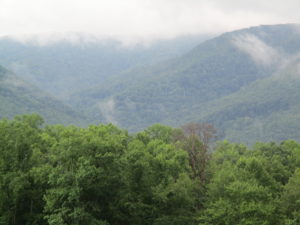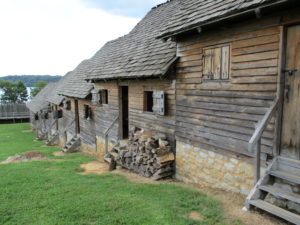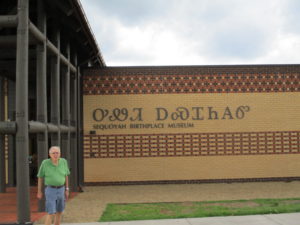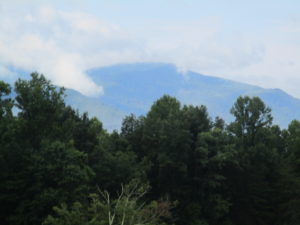If you want a spectacular vista, visit southeastern Tennessee and watch the early morning mist slowly ascend upward from the peaks and valleys of the Great Smoky Mountains. As the mist slowly wafts upward, it showcases vast greenery–beautiful deciduous tree growth draped over soft mountains.

Another natural feature, the Tennessee River, winds through this region, criss-crossing a region rich in history, nature, and culture.
One of the best area historic attractions is the 1,200-acre Fort Loudon State Historic Park. Located inside the well-maintained park, is the Fort Loudon Museum which is dedicated to the memory of one of the earliest British fortifications on the frontier. Outside the museum, is a life size replica of the original fort, Fort Loudon, laid out with bunk houses, supply buildings, and a wall with openings for rifle firing. Inside the museum, visitors can view a brief film which explains the development of this British fort and how it served to protect families in the late 1700s from possible French attack during the French and Indian War (1754-1763).

Museum displays show tents, rifles, and tools used by early area settlers in the region. Some displays feature artifacts from the Cherokee Nation, area people who aligned themselves with the British against the French. The fort assured that trade would continue between the Cherokee and people of South Carolina.
Another significant historic museum, The Sequoyah Birthplace Museum, is owned by the Eastern Band of Cherokee and it features the life of Sequoyah, the inventor of Cherokee written language. The spectacular displays in this museum use sound and movement to explain Sequoyah’s major life events from birth to death.

At first, Sequoyah’s people doubted his efforts to create a written language, but once he and his daughter demonstrated its effectiveness, the Cherokee became one of the most literate people in the country. The animated, audio displays make this a top-notch museum.
Visitors from all over the world travel to this part of the United States to explore the Great Smoky Mountains. A scenic drive to the Townsend entrance to the Smoky Mountain National Park goes along the Little River, Apple Valley Mountain Village, Tuckaleechee Caverns, and the Little Engline Railroad Museum (it contains a shay engine model–the type of all-wheel-drive engine used in early logging days). The Townsend mountain entrance introduces visitors to a lush green deciduous canopy of trees and flowing tributaries of the Little River. A highlight inside the Townsend entrance is Cades Cove Loop–an eleven-mile one-way loop through the Great Smoky Mountains. The loop is indeed a cove of grasslands punctuated with trees and rocky slopes. Along the grasslands, it is easy to view the prolific wildlife–butterflies, wild turkeys, coyote, and black bear.

The ripe cherry trees in August are often the sites of hungry, young bears. Along the cove drive are numerous pull-offs for visitors to view not only wildlife, but also log homes, churches, and a working grist mill built in the early 1900s–a time when loggers and their families lived in the cove.
Night life abounds in this region. Knoxville and Maryville boast a wide variety of cuisine in their restaurants. Barleys, in downtown Maryville, features a free radio concert series every Thursday at 8:00 p.m. Customers can dine on the restaurant’s signature pizza (or other tasty fare) while listening to live performances by well-known area music groups.

This “Behind the Barn” series reminds visitors why so many people have chosen to “hang their hats” in Tennessee.
Knoxville, a major metropolitan area just west of the Great Smoky Mountains has everything you could imagine. The city was host to the successful 1982 World’s Fair and several testaments to the fair remain. Travelers can still take an elevator four floors up the Sunsphere, built for the fair, and walk around its enclosed circular viewing platform to have a stellar view of downtown Knoxville and the mountains.

Adjacent to the World’s Fair Park, is the Knoxville Art Museum which showcases a collection of both traditional and contemporary art.
Our visit to this lush region of eastern Tennessee was also impressive for contributions people are making to the region today. One cousin’s family volunteers at the Blount County Animal Center Complex, helping assure the welfare of area animals. Another converted their home to solar and geothermal energy and planted butterfly-friendly plants on their property. You’ll want to take a trip to these magical mountains and take in the history and culture of this region.
